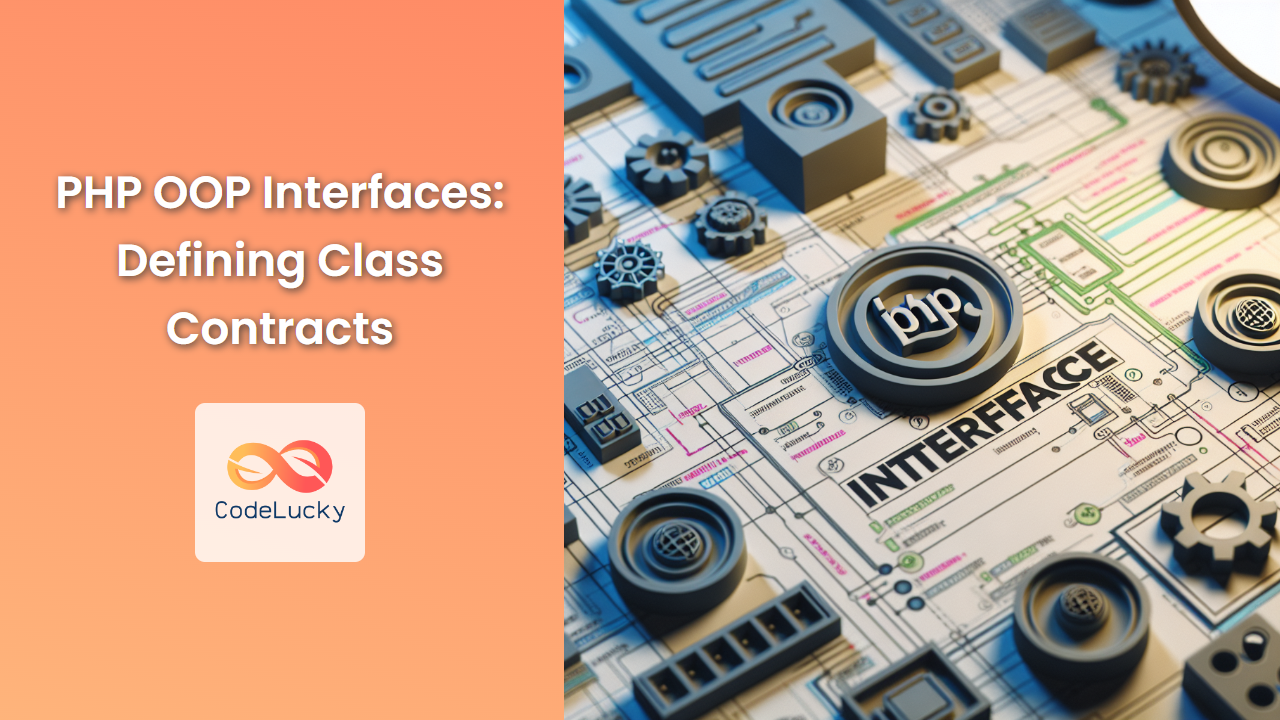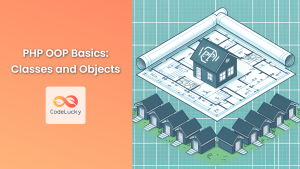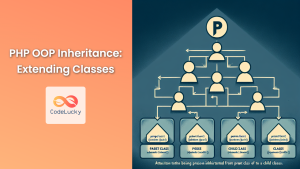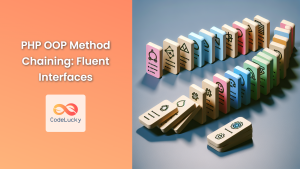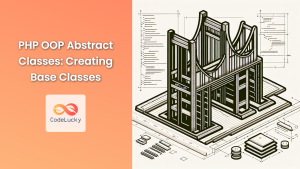In the world of object-oriented programming (OOP), interfaces play a crucial role in defining contracts for classes. PHP interfaces provide a powerful way to specify what methods a class must implement, without dictating how these methods should be implemented. This article will dive deep into PHP interfaces, exploring their purpose, syntax, and practical applications.
What is a PHP Interface?
An interface in PHP is a contract or a blueprint that defines a set of methods that a class must implement. It's like a promise a class makes to provide certain functionality. Interfaces don't contain any method implementations; they only declare method signatures.
Let's start with a simple example:
interface Drawable {
public function draw();
}
In this example, we've defined an interface called Drawable with a single method draw(). Any class that implements this interface must provide an implementation for the draw() method.
Implementing an Interface
To implement an interface, we use the implements keyword. Here's how we can create a class that implements our Drawable interface:
class Circle implements Drawable {
private $radius;
public function __construct($radius) {
$this->radius = $radius;
}
public function draw() {
echo "Drawing a circle with radius {$this->radius}";
}
}
$circle = new Circle(5);
$circle->draw(); // Output: Drawing a circle with radius 5
In this example, the Circle class implements the Drawable interface. It must provide an implementation for the draw() method, or PHP will throw an error.
Multiple Interfaces
One of the powerful features of interfaces is that a class can implement multiple interfaces. This allows for great flexibility in design. Let's see an example:
interface Drawable {
public function draw();
}
interface Resizable {
public function resize($factor);
}
class Rectangle implements Drawable, Resizable {
private $width;
private $height;
public function __construct($width, $height) {
$this->width = $width;
$this->height = $height;
}
public function draw() {
echo "Drawing a rectangle of width {$this->width} and height {$this->height}";
}
public function resize($factor) {
$this->width *= $factor;
$this->height *= $factor;
echo "Resized rectangle to width {$this->width} and height {$this->height}";
}
}
$rect = new Rectangle(10, 20);
$rect->draw(); // Output: Drawing a rectangle of width 10 and height 20
$rect->resize(2); // Output: Resized rectangle to width 20 and height 40
Here, the Rectangle class implements both the Drawable and Resizable interfaces, providing implementations for both draw() and resize() methods.
Interface Constants
Interfaces can also define constants. These constants are always public and cannot be overridden by classes implementing the interface. Let's see an example:
interface MathConstants {
const PI = 3.14159;
}
class Circle implements MathConstants {
private $radius;
public function __construct($radius) {
$this->radius = $radius;
}
public function getArea() {
return self::PI * $this->radius * $this->radius;
}
}
$circle = new Circle(5);
echo $circle->getArea(); // Output: 78.53975
echo MathConstants::PI; // Output: 3.14159
In this example, we define a constant PI in the MathConstants interface. The Circle class can then use this constant in its calculations.
Type Hinting with Interfaces
Interfaces are particularly useful for type hinting in method parameters. This allows us to write more flexible and reusable code. Here's an example:
interface Loggable {
public function getLogMessage();
}
class User implements Loggable {
private $name;
public function __construct($name) {
$this->name = $name;
}
public function getLogMessage() {
return "User {$this->name} logged in";
}
}
class Product implements Loggable {
private $name;
public function __construct($name) {
$this->name = $name;
}
public function getLogMessage() {
return "Product {$this->name} was viewed";
}
}
function logActivity(Loggable $item) {
echo $item->getLogMessage() . "\n";
}
$user = new User("John");
$product = new Product("Laptop");
logActivity($user); // Output: User John logged in
logActivity($product); // Output: Product Laptop was viewed
In this example, we define a Loggable interface and implement it in both User and Product classes. The logActivity function accepts any object that implements the Loggable interface, making our code more flexible and extensible.
Interface Inheritance
Interfaces can inherit from other interfaces using the extends keyword. This allows for creating more specific interfaces based on more general ones. Let's see an example:
interface Animal {
public function makeSound();
}
interface Mammal extends Animal {
public function giveBirth();
}
class Dog implements Mammal {
public function makeSound() {
echo "Woof!";
}
public function giveBirth() {
echo "Dog gives birth to puppies";
}
}
$dog = new Dog();
$dog->makeSound(); // Output: Woof!
$dog->giveBirth(); // Output: Dog gives birth to puppies
In this example, the Mammal interface extends the Animal interface. Any class implementing Mammal must provide implementations for both makeSound() and giveBirth() methods.
Real-World Example: Payment Gateway Integration
Let's look at a more complex, real-world example of how interfaces can be used in a payment gateway integration system:
interface PaymentGateway {
public function setAmount($amount);
public function processPayment();
public function getTransactionId();
}
class PayPalGateway implements PaymentGateway {
private $amount;
private $transactionId;
public function setAmount($amount) {
$this->amount = $amount;
}
public function processPayment() {
// Simulate PayPal API call
$this->transactionId = "PP" . rand(1000000, 9999999);
echo "Processing PayPal payment of $" . $this->amount;
}
public function getTransactionId() {
return $this->transactionId;
}
}
class StripeGateway implements PaymentGateway {
private $amount;
private $transactionId;
public function setAmount($amount) {
$this->amount = $amount * 100; // Stripe uses cents
}
public function processPayment() {
// Simulate Stripe API call
$this->transactionId = "ST" . rand(1000000, 9999999);
echo "Processing Stripe payment of $" . ($this->amount / 100);
}
public function getTransactionId() {
return $this->transactionId;
}
}
function processOrder(PaymentGateway $gateway, $amount) {
$gateway->setAmount($amount);
$gateway->processPayment();
echo "\nTransaction ID: " . $gateway->getTransactionId() . "\n";
}
$paypal = new PayPalGateway();
$stripe = new StripeGateway();
processOrder($paypal, 100);
processOrder($stripe, 200);
In this example, we define a PaymentGateway interface that outlines the methods required for processing payments. We then implement this interface for two different payment gateways: PayPal and Stripe.
The processOrder function can work with any payment gateway that implements the PaymentGateway interface, making our system flexible and easily extensible to support new payment gateways in the future.
When we run this code, we get output similar to:
Processing PayPal payment of $100
Transaction ID: PP5678901
Processing Stripe payment of $200
Transaction ID: ST3456789
Best Practices for Using Interfaces
-
Keep interfaces focused: An interface should represent a single, well-defined behavior. If an interface grows too large, consider splitting it into smaller, more specific interfaces.
-
Use interfaces for type hinting: As shown in our examples, interfaces are excellent for type hinting in method parameters. This makes your code more flexible and easier to test.
-
Design for the future: When designing interfaces, think about potential future requirements. This can help you create more robust and flexible systems.
-
Don't overuse: While interfaces are powerful, not every class needs an interface. Use them when you need to define a contract that multiple classes will adhere to.
-
Use interface inheritance wisely: Interface inheritance can be useful, but be careful not to create overly complex hierarchies.
Conclusion
PHP interfaces are a powerful tool in object-oriented programming. They allow us to define contracts for classes, enabling more flexible and maintainable code. By using interfaces, we can achieve loose coupling between different parts of our system, making it easier to extend and modify our code in the future.
Remember, the key to effective use of interfaces is to focus on behavior rather than implementation details. By defining what a class can do rather than how it does it, we create more modular and reusable code.
As you continue your journey in PHP development, keep interfaces in mind as a valuable tool for creating robust, flexible, and maintainable object-oriented systems. Happy coding! 🚀💻

